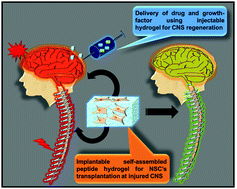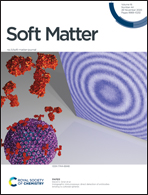Recent trends in the development of peptide and protein-based hydrogel therapeutics for the healing of CNS injury
Abstract
Traumatic brain injury (TBI) and spinal cord injury (SCI) cause millions of deaths and permanent or prolonged physical disabilities around the globe every year. It generally happens due to various incidents, such as accidents during sports, war, physical assault, and strokes which result in severe damage to brain and spinal cord. If this remains untreated, traumatic CNS injuries may lead to early development of several neurodegenerative diseases like Alzheimer's, Parkinson, multiple sclerosis, and other mental illnesses. The initial physical reaction, which is also termed as the primary phase, includes swelling, followed by inflammation as a result of internal haemorrhage causing damage to indigenous tissue, i.e., axonal shear injury, rupture of blood vessels, and partial impaired supply of oxygen and essential nutrients in the neurons, thereby initiating a cascade of events causing secondary injuries such as hypoxia, hypotension, cognitive impairment, seizures, imbalanced calcium homeostasis and glutamate-induced excitotoxicity resulting in concomitant neuronal cell death and cumulative permanent tissue damage. In the modern era of advanced biomedical technology, we are still living with scarcity of the clinically applicable comparative non-invasive therapeutic strategies for regeneration or functional recovery of neurons or neural networks after a massive CNS injury. One of the key reasons for this scarcity is the limited regenerative ability of neurons in CNS. Growth-impermissive glial scar and the lack of a synthetic biocompatible platform for proper neural tissue engineering and controlled supply of drugs further retard the healing process. Injectable or implantable hydrogel materials, consisting majorly of water in its porous three-dimensional (3D) structure, can serve as an excellent drug delivery platform as well as a transplanted cell-supporting scaffold medium. Among the various neuro-compatible bioinspired materials, we are limiting our discussion to the recent advancement of engineered biomaterials comprising mainly of peptides and proteins due to their growing demand, low immunogenicity and versatility in the fabrication of neuro regenerative medicine. In this article, we try to explore all the recent scientific avenues that are developing gradually to make peptide and peptide-conjugated biomaterial hydrogels as a therapeutic and supporting scaffold for treating CNS injuries.

- This article is part of the themed collection: Peptide Soft Materials


 Please wait while we load your content...
Please wait while we load your content...